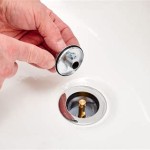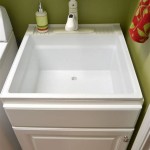How To Measure Undermount Sink Size: A Comprehensive Guide
Measuring for an undermount sink is crucial for ensuring a proper fit in your countertop cutout and avoiding costly installation errors. Accurate measurements are essential whether you are replacing an existing sink, installing a new countertop, or simply planning a kitchen renovation. This guide provides a detailed explanation of the steps involved in accurately measuring an undermount sink, emphasizing the importance of precision and covering various scenarios you might encounter.
The process requires careful attention to detail and the use of appropriate measuring tools. Using the wrong tools or neglecting important aspects of the measurement can lead to inaccuracies and a sink that doesn't fit as expected. By understanding the different dimensions to consider and employing the correct techniques, you can confidently determine the correct size for your undermount sink and ensure a seamless installation.
Before you begin, gather the necessary tools. You will need a measuring tape (preferably a metal one for accuracy), a pencil or marker, and paper to record your measurements. A straight edge, such as a ruler or level, can also be helpful for ensuring accurate readings, particularly when measuring depth. Access to the sink's installation template or the sink itself is ideal. If the sink is already installed, accessing the underside of the countertop is required.
Key Point 1: Measuring the Sink Bowl Dimensions
The first step in measuring an undermount sink is to determine the dimensions of the bowl itself. This involves measuring the length, width, and depth of the sink's interior. These dimensions dictates the usable space within the sink.
To measure the length, hold the measuring tape from one interior edge of the sink bowl to the opposite interior edge. Ensure the tape measure runs along the longest straight line within the bowl. Record this measurement in inches or millimeters, depending on your preference and the units used by the sink manufacturer.
Next, measure the width of the sink bowl. This is the distance from one interior side edge to the opposite interior side edge. Again, ensure the tape measure runs along the widest straight line within the bowl, perpendicular to the length measurement. Record this measurement alongside the length.
Finally, measure the depth of the sink bowl. This is the distance from the top edge of the sink bowl to the bottom of the bowl. Use a straight edge to extend across the top of the sink to create a reference point. Then, measure from the straight edge down to the lowest point within the sink bowl. This is particularly important for undermount sinks as the depth contributes significantly to the overall sink capacity.
If you are replacing an existing sink, access to the old sink can greatly simplifies the measurement process. However, even with the old sink available, verify the manufacturer's specifications to confirm that the measurements you obtained are accurate. Manufacturing tolerances can sometimes lead to slight discrepancies.
It is important to take multiple measurements of the length, width, and depth. Slight variations can occur due to the sink's shape or irregularities. Averaging these measurements provides a more accurate representation of the sink bowl dimensions.
For sinks with rounded corners or irregular shapes, extra care is necessary. Focus on measuring the overall dimensions of the bowl, ignoring the specific curvature of the corners. The manufacturer's specifications often provide detailed diagrams showing the key dimensions to measure.
Key Point 2: Measuring the Outer Dimensions and Flange
After measuring the bowl dimensions, the next step is to measure the outer dimensions of the sink and the size of the flange. The flange is the lip of the sink that attaches to the underside of the countertop. These dimensions are critical for ensuring the sink fits into the countertop cutout and is securely mounted.
To measure the outer length, hold the measuring tape from one outer edge of the sink (including the flange) to the opposite outer edge. Ensure the measuring tape runs along the longest straight line across the sink. Record this measurement carefully.
Next, measure the outer width of the sink. This is the distance from one outer side edge (including the flange) to the opposite outer side edge. Again, ensure the tape measure runs along the widest straight line across the sink, perpendicular to the length measurement. Record the width.
Accurately measuring the flange width is often overlooked but is essential for proper installation. The flange width determines how much the sink extends beyond the countertop cutout's edge. Measure the distance from the edge of the sink bowl to the outer edge of the flange. This measurement should be consistent around the entire sink. Variations in the flange width can indicate manufacturing defects or inconsistencies that could affect the mounting of the sink.
For undermount sinks with unusual flange shapes, obtaining detailed measurements and comparing them to the manufacturer's specifications is of utmost importance. A drawing or photograph of the flange can be helpful for reference when ordering a replacement sink. The flange shape should match the installation kit and countertop cutout.
The thickness of the sink material itself should also be considered, especially if the new sink material is different from the old sink. This thickness will impact the overall depth measurement and may require adjustments to the countertop cutout.
When replacing an existing sink, carefully inspect the old sink's mounting brackets and hardware. Note their type, position, and dimensions. If you plan to reuse the existing hardware, ensure it is compatible with the new sink.
Key Point 3: Measuring the Countertop Cutout (For Replacement Sinks)
If you are replacing an existing undermount sink without changing the countertop, accurately measuring the countertop cutout is crucial. This ensures the new sink fits the existing opening without requiring modifications to the countertop.
Access the underside of the countertop where the existing sink is mounted. Carefully locate the edges of the cutout. If the old sink is still installed, remove it before proceeding with the measurement.
Measure the length of the cutout from one edge to the opposite edge. It is crucial to measure the longest possible dimension. Ensure that the measuring tape is parallel to the countertop's side edges.
Measure the width of the cutout, perpendicular to the length. Again, measure the widest dimension across the opening.
Compare these measurements to the outer dimensions of the new sink you are considering. The new sink needs to be slightly larger than the cutout to accommodate the flange and allow for secure mounting. As a general rule, the sink overlap should be at least 1/4 inch on all sides.
Take note of the shape of the cutout corners. Most undermount sink cutouts have rounded corners. Ensure that the corner radii of the new sink match the cutout corners. Mismatched corner radii could prevent the sink from seating properly in the opening.
Check for any existing mounting brackets or clips attached to the underside of the countertop. If the new sink requires different mounting hardware, plan to remove the old hardware and prepare the surface for the new mounting system.
If the countertop is made of a fragile material like granite or marble, exercise extreme caution when removing the old sink and measuring the cutout. Avoid applying excessive force that could damage the countertop.
If you are unsure about the accuracy of your measurements, consult with a professional installer. They can verify your measurements and provide guidance on selecting the appropriate sink for your countertop.
Careful planning and accurate measurement are paramount for a successful undermount sink installation. With patience and attention to detail, you can accurately determine the size of your sink and ensure a seamless and aesthetically pleasing result.

How To Measure For A Kitchen Sink In 5 Steps Modern Living

Measure A Kitchen Sink Temecula Handyman

3 Ways To Measure A Kitchen Sink Wikihow

Guide To Choosing The Perfect Kitchen Sink Size For Your Cabinet

How To Determine The Right Size Of Your Undermount Sink

Measure A Kitchen Sink Temecula Handyman

Quick Tip Tuesday How To Measure For A Replacement Undermount Kitchen Sink Youtube

How To Choose The Right Kitchen Sink Size Ultimate Guide

A Practical Guide To Measure The Size Of Kitchen Sink

Bathroom Sink Dimensions Sizes How To Measure Your Vanity







